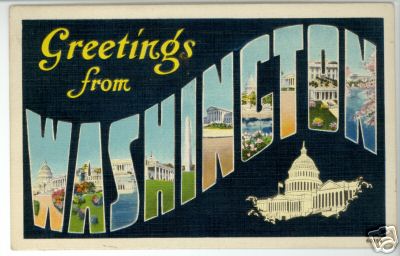Mediocrity, the exchange value of place, and the DC Election

What's up with the Post this week, anyway?
1. Although halfhearted, they endorse the most progressive City Councilmember, Philip Mendelson, for another term. This is the first time they've endorsed him, after previously pushing much more pro-business candidates in the past. See "For At-Large Council."
2. The business columnist Stephen Pearlstein writes a column today about how lousy retail is along K Street NW, particularly in the western end of the Central Business District. See "The Downtown Drag," subtitled "No Room for Retail in Northwest D.C.'s Office Boom,
and then think about the fact that the Connecticut and K Street intersection is probably the busiest pedestrian place in the core of the city, that Farragut North and Farragut West subway stations are quite busy, that Farragut Square is a nicely placed park with tremendous opportunity. (Not to mention other parks downtown such as Franklin Park and McPherson Square.)
While he touches upon it, he misses or glosses over the underlying economics of the problem, that newly constructed buildings demand uniformly high rents. He understands that developers seek the highest paying tenants, usually chains and street vitality-killing uses like banks. But the real problem is the high rents. So touting Anthony Lanier's idea for master leasing and managing all the retail space downtown doesn't fully address this issue (because the flexibility this would provide is only $5-$15 per square foot).

Plus there is the issue of unique retail. While the article uses a photo from Los Angeles, it fails to mention LA's focused effort to develop and attract independent retail, the Historic Downtown Los Angeles Retail Project. Of course, it helps that LA has a large stock of old buildings -- see the previous blog entry (Why aren't people) Learning from Jane Jacobs revisited -- to seed such businesses.
Also see Identity ≠ branding or Authenticity is the basis of identity.
3. Earlier in the week, the Post ran the previously discussed piece "The Mediocre Mile" about the architectural banality of the new housing being built along Massachusetts Avenue NW.
The thread linking these articles is the "exchange value of place." As long as the focus is only on financial return, developers will do only what is minimally necessary, to make the most money. And contributions to "use value of place" such as quality public spaces, will only be made to the point where the marginal return to exchange value remains positive.
Not to mention that it is the rare developer that cares about quality and place.
After reading "Blighted Cropp," one of the cover stories in this week's Washington City Paper about the DC Election, I was thinking about this overnight, how to assess the efforts of Mayor Williams over the past 8 years, and about how to best continue this transformation going forward.
The prevailing attitude of those in the city's Growth Machine--people working for government, elected officials, allied nonprofits such as the DC Marketing Center or Business Improvement Districts, and developers, financiers, and media--is that the growth that occured over the past few years, the opportunities, are a one time event, an unusual coming together of a variety of trends and forces seemingly unlikely to be repeated.
Therefore, build any and whatever you can, now, don't tarry, because the opportunities and capital will go somewhere else.
Demanding quality is seen as a hindrance to development, and so it isn't done. Using DC-owned property as way to add to the affordable housing stock wasn't really on the table, because the Administration wanted to sell the properties off and curry favor with developers.
The baseball stadium is a perfect example. By comparison, the article in yesterday's Sports section, "The NFL's Search for El Dorado," subtitled "League Is Driven To Fill Hole in L.A. But Is It Fool's Gold?," about how difficult it is for the NFL to extract millions of dollars for a football stadium and team in Los Angeles shows a different way. Note that people don't think that Los Angeles isn't a "world class" city because they don't have a professional football team.
Many other initiatives started by the Administration have been under-developed and there isn't the follow through to make them happen, or to improve them. And there isn't the commitment to civic engagement and public participation within the projects. Yes, it's harder to get things done when more people are involved. But when the right people are involved a better result obtains.
There is no question that the city has moved forward, tremendously, over the past 8 years. At the same time, there is plenty of room for improvement. For example, I wrote this in the Philadelphia Daily News, in October 2003, almost 3 years ago:
Sure, you need to improve municipal services and public safety. But in Washington, our crime rate is going up, our public schools aren't great, and the improvement of most city services seems to have stalled. Even so, demand for housing in the center city is strong - thousands of new units are being constructed, houses vacant for years are being renovated, and our neighborhood commercial districts are beginning to turn around.
So continuing the Williams legacy as is without modification is problematic.
The first thing we have to change is the attitude about the value and importance of the city.
Washington, DC has plenty to offer and we should see a demand for quality as a way to make the city even more attractive as a place to do business, to live, and to visit.
See these previous blog entries:
-- Maybe DC can learn that it has something that developers want
-- If the carcass is the DC Government property portfolio, are eager developers merely "The Carrion Eaters?"
-- Who can you turn to when the most active, aggressive destroyers of the city's livable places are DC Government agencies?
Index Keywords: urban-design-placemaking



0 Comments:
Post a Comment
<< Home